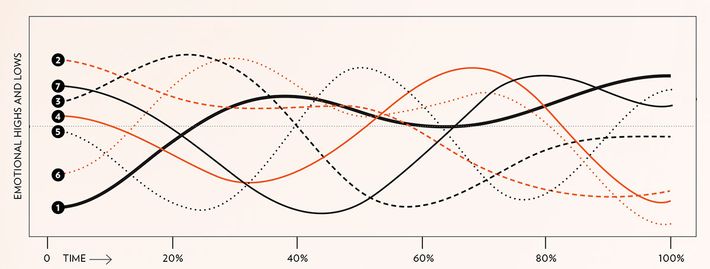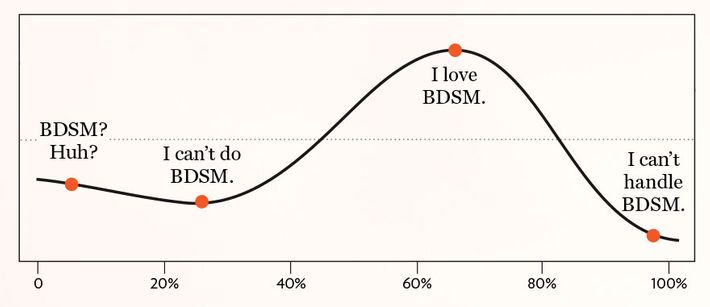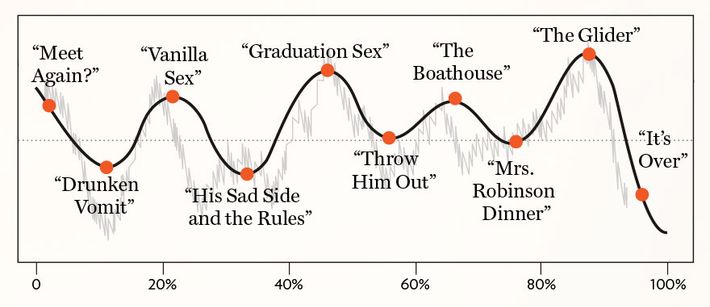Nearing a million views on YouTube is a four-minute clip of a lecture by Kurt Vonnegut. He draws two axes on a chalkboard: beginning to end, ill fortune to good fortune. When the hero rejoices, the graph goes up, and when he despairs, it nosedives. (ItÔÇÖs a little like those dials CNN gives focus groups.) Vonnegut sketches two basic stories: a rise-and-fall story he depicts as ÔÇ£man on hillÔÇØ and its inverse, a U-shaped curve of redemption called ÔÇ£man in hole.ÔÇØ He wonders what technology might do with his thesis: ÔÇ£ThereÔÇÖs no reason why the simple shapes of stories canÔÇÖt be fed into computers.ÔÇØ
Matthew Jockers, a professor of ÔÇ£comparative text analysis,ÔÇØ was already working on sentiment mapping when he saw the Vonnegut clip and decided to take up the challenge. So last year he built a program that grouped more than 40,000 books into six essential plots. He added one more in a forthcoming book, co-written with Jodie Archer, called The Bestseller Code ÔÇö a big-data take on why some books sell so much better than others. (The results conform roughly to Christopher BookerÔÇÖs famous Seven Basic Plots ÔÇö see below.)
The new book also has specific things to say about our most popular plots, including a section on the Girl books (gone, on the train, dragon-tattooed): All three put their girls into a hole and pretty much leave them there, subverting our expectations of a happy ending. But many blockbusters share a particular plot secret. The Da Vinci Code, for instance, reveals a pattern of ups and downs both dramatic and predictable ÔÇö ÔÇ£a beating kind of regular rhythm,ÔÇØ as Jockers puts it (see below). Which may be familiar from your latest serial-TV binge session.

1. Comedy: A happy ending, with a speed bump (The Secret Life of Bees).
2. Tragedy: ComedyÔÇÖs inverse (Bonfire of the Vanities).
3. Rags to Riches: Your basic coming-of-age story (Cinderella; Jane Eyre).
4. Rebirth: A more downbeat transformation (Wolf Hall; The Stand).
5. Voyage and Return: A roller-coaster adventure (Alice in Wonderland; The Road).
6. Quest: Two rises and a fall (The Corrections).
7. Overcoming the Monster: Classic man-in-hole (The Silver Linings Playbook).
50 Shades, Two Ways
From a birdÔÇÖs-eye view, E. L. JamesÔÇÖs BDSM best seller traces a classic ÔÇ£rebirthÔÇØ arc; zoom in a bit more and you can see the chapter-by-chapter heartbeatlike pulse that Jockers says lies underneath the most compulsively readable stories.


*This article appears in the August 8, 2016 issue of New York Magazine.

